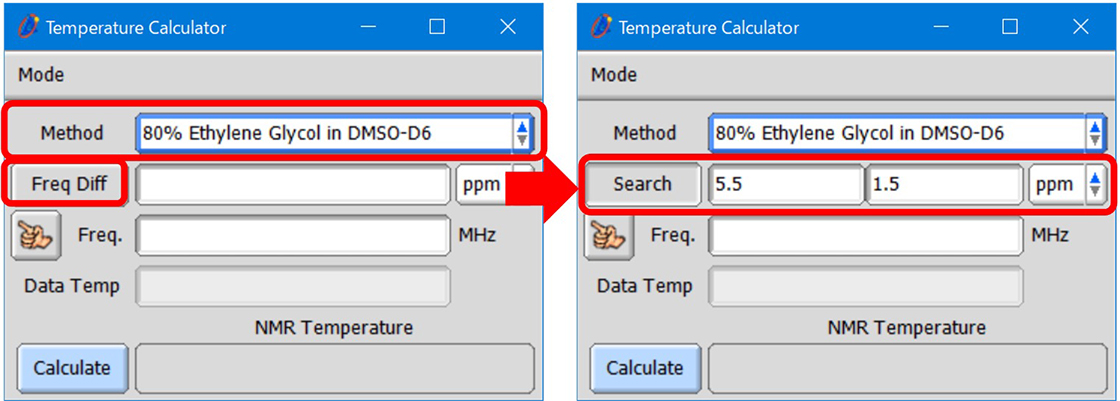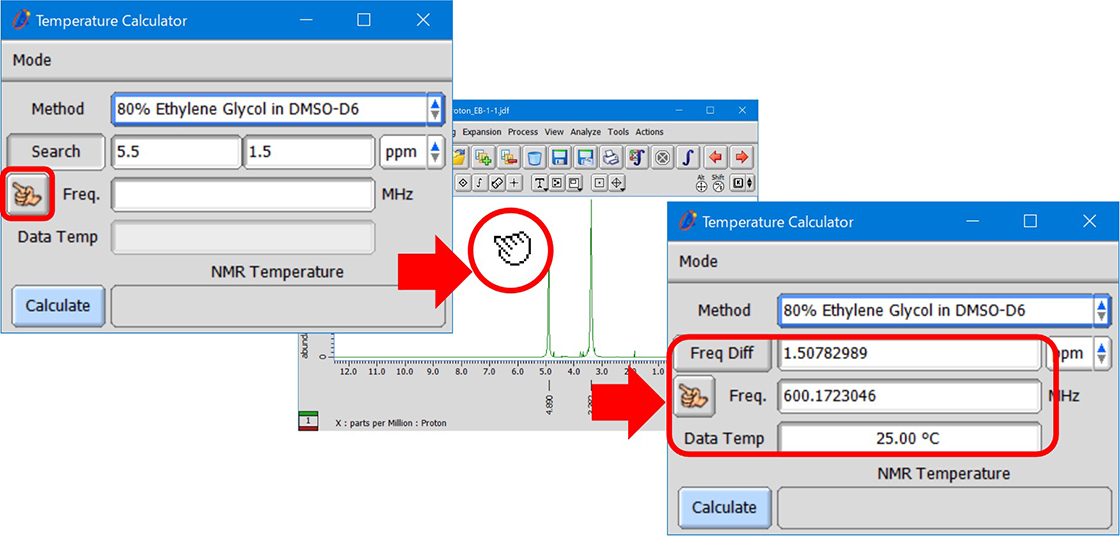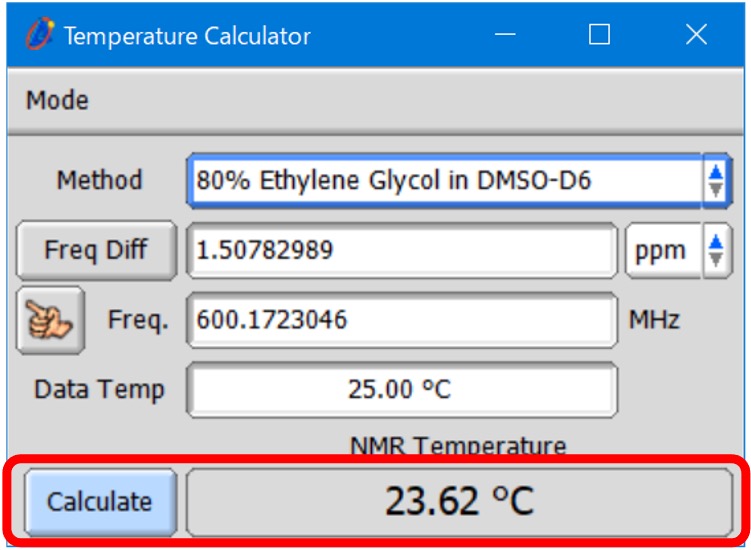Delta Tips: Temperature Calculator
NMDT_0076
As the thermocouple to measure NMR sample temperature is placed in the vicinity of the NMR tube, not inside the tube, we rather monitor temperature of gas either cooling or heating our NMR sample. For most applications, this approach is perhaps sufficient.
However, it is important to report sample temperature more accurately when measuring relaxation times, diffusion coefficients and chemical shifts sensitive to temperature. The Temperature Calculator is a tool which allows us to determine actual temperature inside the NMR sample by using a standard sample such as methanol or ethylene glycol. Signals of these standard samples are sensitive to temperature and allow us to determine sample temperature by measuring the difference in chemical shifts of two signals in the spectrum.
For example, the temperature calibration formula of ethylene glycol is as follows:

Temperature calibration samples :
In the example bellow, we will introduce two calibration samples, methanol and ethylene glycol. It is necessary to use high purity samples of recommended composition.
The chemical shifts of methanol and ethylene glycol decrease at high temperature, because the strength of intramolecular hydrogen bonds decreases with increasing temperature.
Low temperature calibration sample, methanol :
Temperature range: -95°C to +57°C
Measure the proton chemical shift difference between the CH3 and OH signals, and calculate actual sample temperature.
High temperature calibration sample, ethylene glycol :
Temperature range: 0°C to +143°C
Measure the proton chemical shift difference between the CH2 and OH signals, and calculate actual sample temperature.
How to use the Temperature Calculator tool :
① Select Tools-Calculators-Temperature in the Delta Console window to open the Temperature Calculator window.
② Select the sample in the Method list in the Temperature Calculator window. Click the Freq Diff button. Note that the Freq Diff button has changed into the Search button and displayed a range of proton chemical shifts in ppm.

③ Click the Finger button and select the data of ethylene glycol with the Finger cursor as shown below. Note that the tool automatically loaded the chemical shift difference and the proton resonance frequency of the spectrometer from the spectrum.

④ Click the Calculate button to display the result. Note that the difference between the preset temperature and the actual temperature inside the sample is approximately 1.4 °C.

[1] R.E. Hoffman and E.D. Becker, Journal of Magnetic Resonance, 176, 87-98 (2005).
- Please see the PDF file for the additional information.
Another window opens when you click. 
PDF 905.2KB
SEARCH APPLICATIONS
Related Products
Are you a medical professional or personnel engaged in medical care?
No
Please be reminded that these pages are not intended to provide the general public with information about the products.
